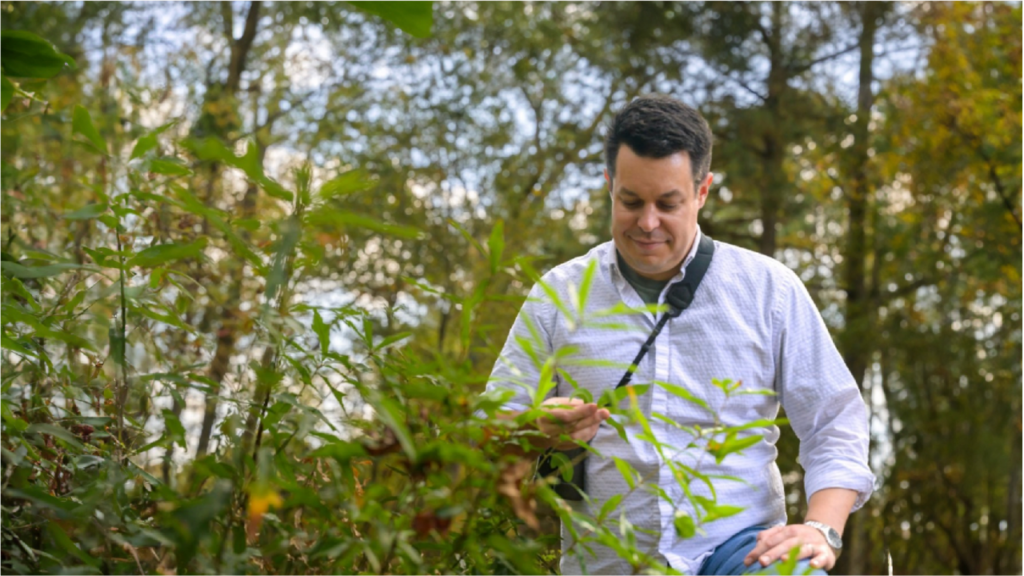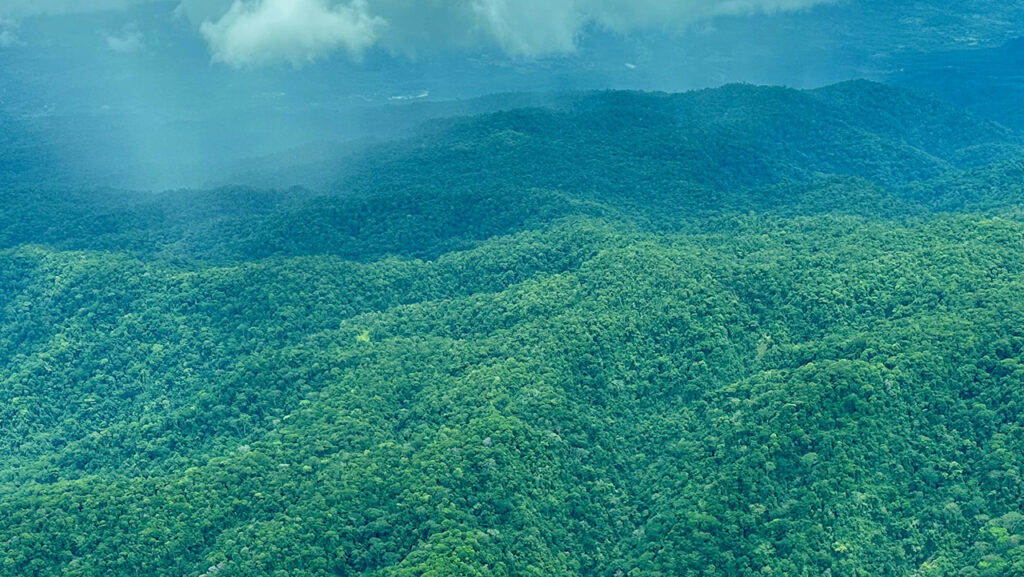As habitat is lost, the planet’s biodiversity has begun to decrease. Recently, six species in the United States were removed from the Endangered Species List—because they are now extinct. In the past 50 years, populations of terrestrial vertebrates are down 70%, insect populations are down almost 50% and the U.S. alone has 3 billion fewer birds.
The decline of biodiversity has far-reaching implications for humans, aside from the mental and physical health benefits of being outdoors in wild spaces. Wild plants and animals provide ecosystem services that benefit us all—water purification, pest control and pollination, for example.
Conservationists agree that to maintain species biodiversity, we must preserve and maintain healthy ecosystems. It’s estimated that we must set aside 30-50% of the Earth to preserve the remaining species. However, scientists disagree on the best approach for prioritizing areas for conservation, and the best approach may not be a one-size-fits-all paradigm that is universally accepted.
Jonathon Valente, an Auburn University assistant research professor in the College of Forestry, Wildlife and Environment and assistant unit leader for USGS’s Alabama Cooperative Fish and Wildlife Research Unit, has undertaken the challenge to help clarify the issue.
 Jonathon Valente is shown in a forested area near Auburn University. He and his colleagues are seeking to resolve a decades-long debate that has undermined wildlife conservation efforts worldwide.
Jonathon Valente is shown in a forested area near Auburn University. He and his colleagues are seeking to resolve a decades-long debate that has undermined wildlife conservation efforts worldwide.
A LONGSTANDING DIVIDE
In a paper recently published in the journal Landscape Ecology, Valente, Matthew Betts of Oregon State University, and their colleagues shine a light on the decades-old debate that has stagnated our understanding of conservation planning and undermined our efforts to preserve biodiversity.
Conservation biologists largely agree that supporting the remaining species and their habitats will require far more protected spaces than currently exist, says Valente.
Since the 1970s, however, scientists have debated whether we can support more biodiversity by investing effort into protecting many small, well-dispersed patches of habitat or into fewer large, contiguous patches. To date, research on this “SLOSS” (single-large or several-small) topic has largely gone to bolster one position over another, leaving conservation planners with mixed messages and no clear guidance.
To understand the problem in a practical way, imagine that your county has enough money to turn exactly 10 acres of forest into a park. The county could purchase a single, 10-acre forest plot and make one park. On the other hand, the county could purchase 10 one-acre plots of forest and turn each of them into a park. Which approach is better for supporting forest-dwelling plants and animals?

Aerial view of contiguous forest within Costa Rica’s Piedras Blancas National Park. Photo credit: Matthew Betts, Oregon State University.
NO EASY ANSWERS
Here’s where things start to get complicated. The reality, according to Valente, is that some species would benefit more from the first approach and others from the second. If your county is home to multiple species needing protection, and some would thrive better in the first option and some in the second, which approach saves the most species and biological diversity?
It depends on who you ask.
“I know and respect some brilliant scientists that would argue a single-large patch of habitat is better, and I know and respect some brilliant scientists that would argue several small patches are better,” Valente said. “My concern is that while we are debating one another on this topic, biodiversity continues to decline, and land managers are left without clear guidance for the best path forward to slow the bleeding.”
As for why such brilliant scientists continue to disagree about the best approach for preserving biodiversity, Valente notes, “In the simplest terms, I’d say the problems are that different scientists visualize and measure characteristics of landscapes and biodiversity differently.” Indeed, the paper suggests that these methodological differences may be the most important cause of opposing conclusions.
BRIDGING THE GAP
Valente and Betts argue that the time has passed for digging further into entrenched positions. “Rather than wading into this fight,” said Valente, “we’ve tried to step back and take stock of the battlefield.” Instead, they aim to provide a framework for moving forward.
As an initial step towards resolving this disagreement, Valente and Betts invited preeminent researchers from both sides of this debate to partake in developing their paper. “We wanted to ensure that this paper was as neutral as possible and wasn’t seen as another academic journal article advocating for one approach over the other.” By incorporating edits and feedback from authors with diverse perspectives, they took an initial step toward unifying ideas.
In their paper, Valente and colleagues propose several possible reasons this 50-year-old debate continues and suggest ways researchers can prevent biases from creeping into future studies. They also recommend several community consensus-building exercises that could help generate a more unified voice from ecologists on this topic. For example, collaborations among research groups with different approaches to measuring the effects of landscape structure on biodiversity could clarify how different conclusions arise.
Their goal is to advocate for the scientific community to bridge the gap via constructive conversation. This would require researchers first to acknowledge that researchers with opposing viewpoints are acting in good faith and then continue to look for explanations for the differences rather than reasons to support one set of conclusions.
The chief goal would be to identify points of agreement and articulate a consistent set of principles to offer policymakers and land managers, as their decisions are increasingly important for the world’s biodiversity.
“This paper provides an important first step toward scientists providing crucial guidance for policymakers and managers when it comes to how best to conserve biodiversity in managed landscapes,” said Janaki Alavalapati, the Emmett F. Thompson Dean of the College of Forestry, Wildlife and Environment.
An aerial view of fragmented landscape south of San Jose, Costa Rica. Photo credit: Matthew Betts, Oregon State University.
IMPLICATIONS FOR POLICY
Valente notes that the implications of this debate extend far beyond academia. For example, the Biden administration recently announced a plan to protect 30% of the land in the United States by the year 2030. “With careful planning, we may be able to ensure that the network of new protected spaces we are proposing is greater than the sum of its parts. But at present, it remains ambiguous about how we should distribute that 30% of protected lands in space to get the most bang for our buck.”
Rua Mordecai, science coordinator for the Southeast Conservation Adaptation Strategy, or SECAS, agrees that the debate has often led to a focus on the wrong questions. He says an intense focus on forest fragmentation missed one of the biggest conservation problems in the Southeast—huge, historic declines in grassland and open savannah.
“We’re also looking at the landscape more holistically as a connected network of lands and waters,” Mordecai said. “We need some level of fragmentation to conserve the unique combinations of soils and topography that are key drivers of biodiversity. We also need some level of fragmentation to ensure equitable access to nature for everyone in the Southeast.”
Cheryl Ann Friesen, a science liaison with the U.S. Forest Service in the Willamette National Forest, says land managers sometimes must extrapolate from theory or papers involving habitat from other parts of the world.
“Managers often want one answer, and we want it yesterday,” Friesen said. The guiding principle for conservation planning is to make decisions based on the best available science. “But what might seem like the ‘best available science’ often comes with a time stamp. Chances are, it will evolve into the next iteration of ‘best available science.’”
The suggestions set forth by Valente and Betts can end the scientific stalemate in favor of healthy, productive debate with a chance of moving the needle toward a unified approach conservationists can agree upon.
MEDIA CONTACTS:
Jamie Anderson, College of Forestry, Wildlife and Environment, 334-844-9248 (jla0015@auburn.edu);
Preston Sparks, director of university communications services, 334-844-9999 (pjs0027@auburn.edu)










